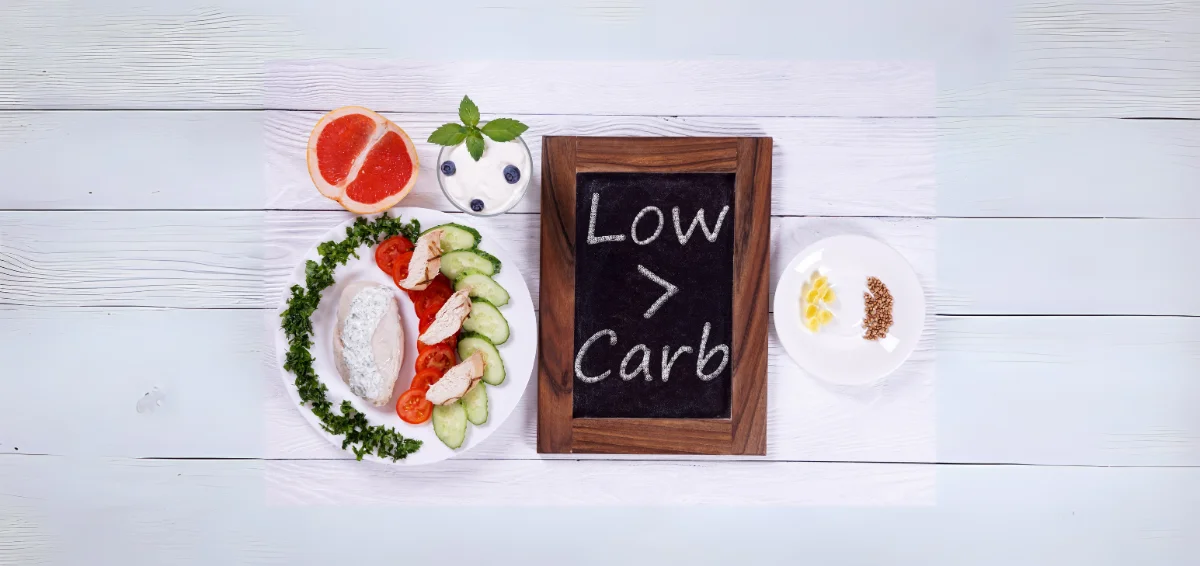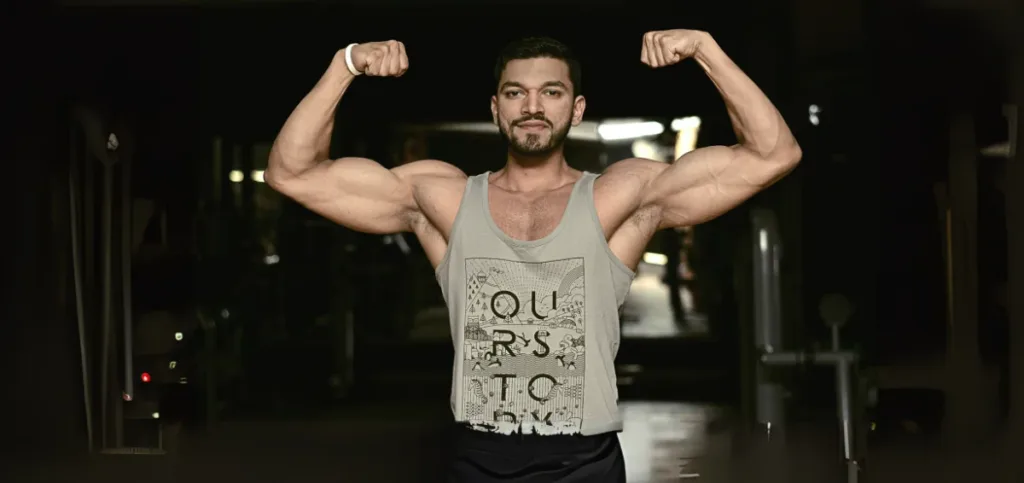
Strong, defined shoulders can transform your upper body posture and appearance. The deltoids are made up of the anterior, lateral, and posterior heads. They are the main muscles responsible for shoulder shape and strength. When you train them properly, you will get higher functional movement and stability with better aesthetics. In this guide, you will go through 12 effective deltoid muscle exercises you can do at the gym or at home. These moves target all parts of the shoulder for balanced growth and higher strength. On top of this, you enjoy improved performance in everyday activities or sports.
Effective Deltoid Exercises For Your Shoulders
1. Overhead Press
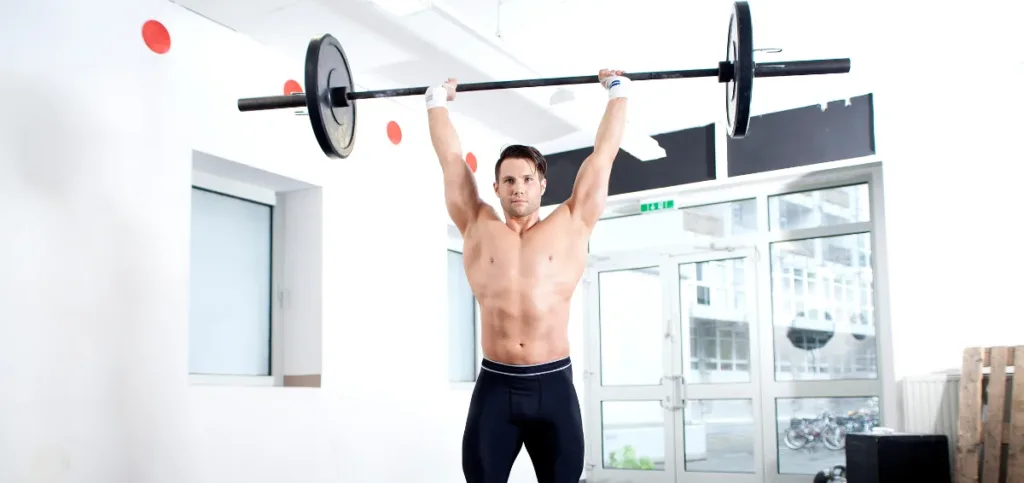
This classic move targets the front and middle deltoid heads. It gives your shoulders size and power. Plus, it works your triceps and upper chest. You can use dumbbells, a barbell, or resistance bands. The controlled upward movement stimulates muscle fibers. On the other hand, lowering the weight builds stability. You can perform it in a seated position to add more isolation. The standing variation engages your core for balance. It is a solid move for anyone aiming to strengthen and shape their shoulders.
How to Do It:
- Stand/sit with your back straight and core tight.
- Hold the weights at shoulder height. Your palms should face forward.
- Push the weights upward until your arms are fully extended.
- Lower them back to the starting position in a slow and controlled manner.
2. Lateral Raises
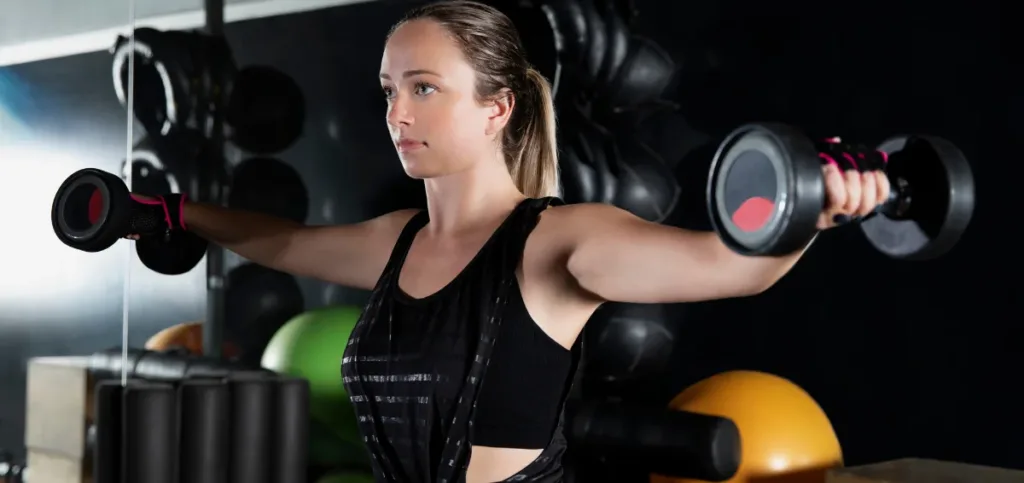
It is a go-to exercise for building the width of your shoulders. The lateral raise exercise isolates the lateral deltoid, which helps you create that broad and athletic look. The movement is simple. However, it requires strict form as you have to avoid swinging your arms. You can use lighter weights to maintain control. It’s best done slowly, as it keeps constant tension on the muscle. In fact, it is perfect for shaping and defining your side delts.
How to Do It:
- Stand with feet shoulder-width apart, dumbbells by your sides.
- Keep a slight bend in your elbows.
- Lift your arms out to the sides until they’re at shoulder height.
- Slowly lower them without letting gravity take over.
3. Front Raises
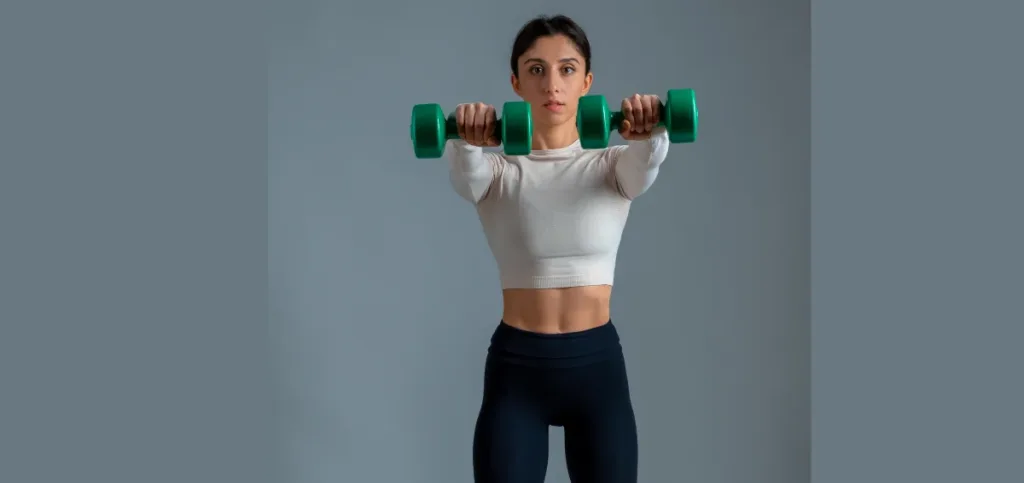
This exercise isolates the front deltoid head, improving the rounded look of your shoulders. You can use dumbbells, a barbell, or a weight plate. Also, front raises engage your upper chest slightly. Keep the movement slow and controlled to prevent using momentum. It is ideal for improving strength in pushing movements and sports.
How to Do It:
- Hold weights in front of your thighs with palms facing down.
- Keep your arms straight. Don’t lock them.
- Raise your arms forward to shoulder level.
- Lower them gently and repeat everything.
4. Arnold Press

Named after Arnold Schwarzenegger, this variation combines rotation and pressing for full shoulder activation. It works all three heads of the deltoid and improves shoulder mobility. The twist adds extra engagement to the front delts while keeping tension throughout the move. It is ideal for variety in your shoulder routine.
How to Do It:
- Sit or stand holding dumbbells in front of you, palms facing your body.
- As you press upward, rotate your palms to face forward.
- Extend your arms fully overhead.
- Reverse the motion back to the starting position.
Read Also: Delt exercises
5. Reverse Fly
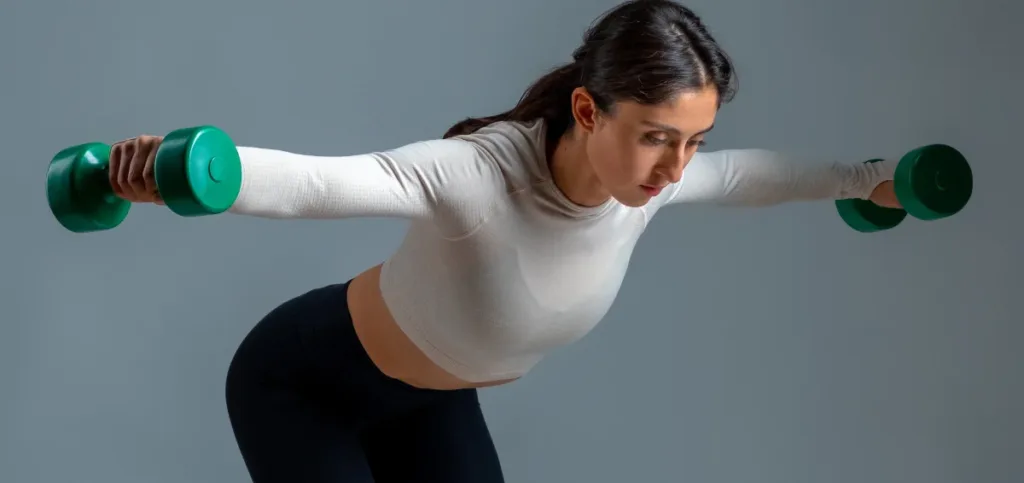
It targets the rear delts, which are often neglected by a number of people. Strengthening them improves posture and balances shoulder development. You can perform it seated, bent over, or on an incline bench. The main thing is to focus on squeezing your shoulder blades together. Plus, it works the upper back.
How to Do It:
- Hold dumbbells and bend forward at the hips.
- Keep your back flat and core engaged.
- Lift your arms out to the sides, squeezing the shoulder blades.
- Lower slowly without letting your shoulders roll forward.
6. Upright Row
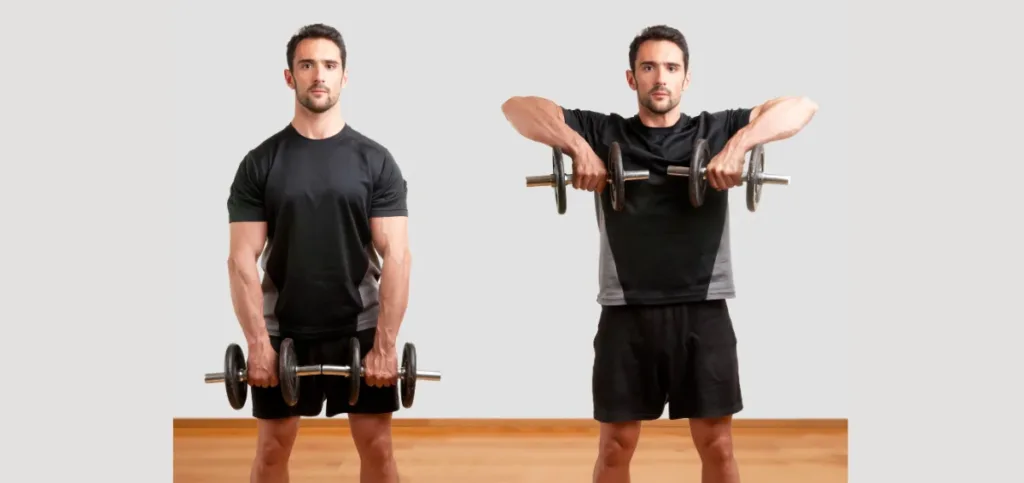
This move builds both the deltoids and the traps, giving your upper body a fuller look. It’s effective for creating width and height in the shoulders. Using a barbell or dumbbells works equally well. Keep the lift smooth to avoid shoulder strain. A moderate weight is best for form and safety.
How to Do It:
- Hold weights in front of your thighs, and your palms should be facing you.
- Pull the weights straight up along your body to chest height.
- Keep your elbows higher than your wrists.
- Lower the weights slowly.
7. Push Press
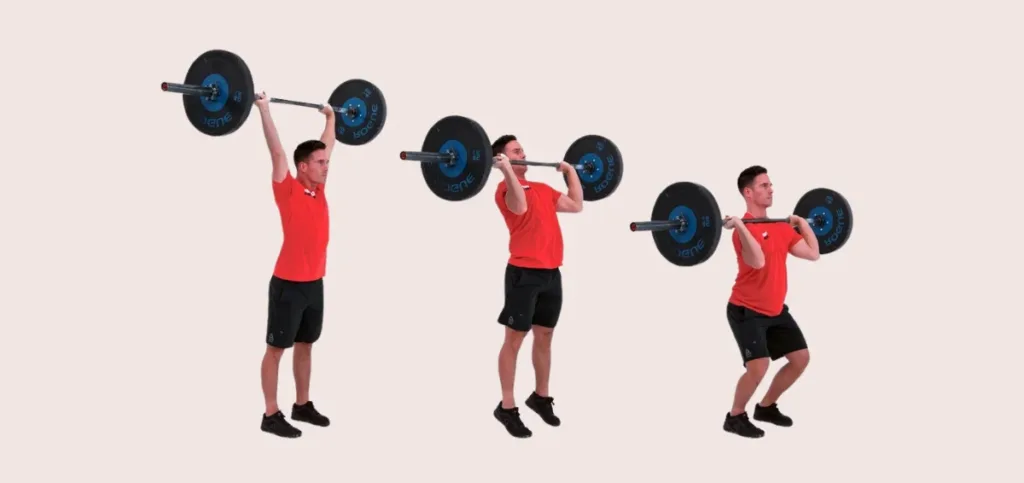
The push press is a power move that combines lower-body drive with shoulder pressing. It allows you to lift heavier weights than a strict press. This develops the overall strength and gives you explosive power. It is an outstanding functional exercise for athletes and lifters alike.
How to Do It:
- You have to hold the weights at shoulder height.
- Bend your knees slightly and push through your legs.
- Use the momentum to press the weights overhead.
- Lower everything in a controlled way.
- Reset before you perform the next rep.
8. Cable Face Pull
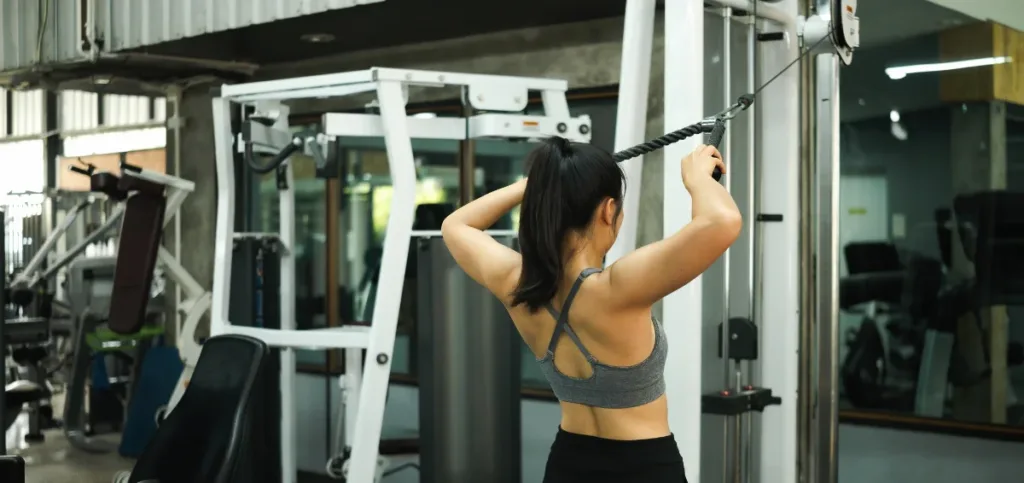
This targets the rear delts and helps correct rounded shoulder posture. The cables make sure that you get constant tension throughout the movement. Plus, it strengthens the rotator cuff, which further raises the shoulder stability. Perfect for balancing out pressing exercises and avoiding muscle imbalances.
How to Do It:
- You have to attach a rope to a cable machine at face height.
- Grip the rope with both hands.
- Pull it toward your face, leading with your elbows.
- Squeeze your rear delts before returning to start.
9. Dumbbell Shrugs
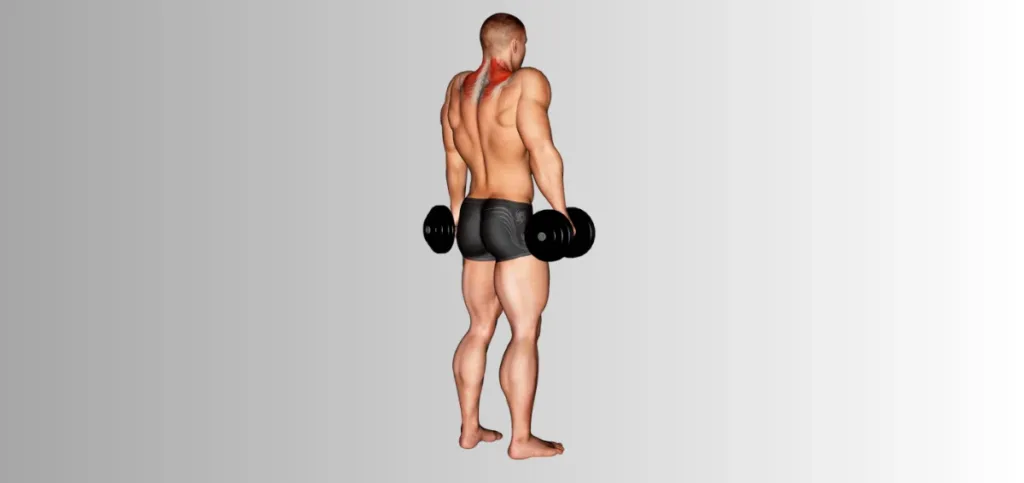
While shrugs primarily work the traps, they also engage the rear and lateral delts. They help you to develop a thicker upper back and improve neck-to-shoulder connection. This exercise is simple but highly effective when done with proper form.
How to Do It:
- Stand tall, holding dumbbells at your sides.
- Lift your shoulders as high as possible toward your ears.
- Hold for a moment and then lower slowly.
- Avoid rolling your shoulders to prevent strain.
10. Pike Push-Ups
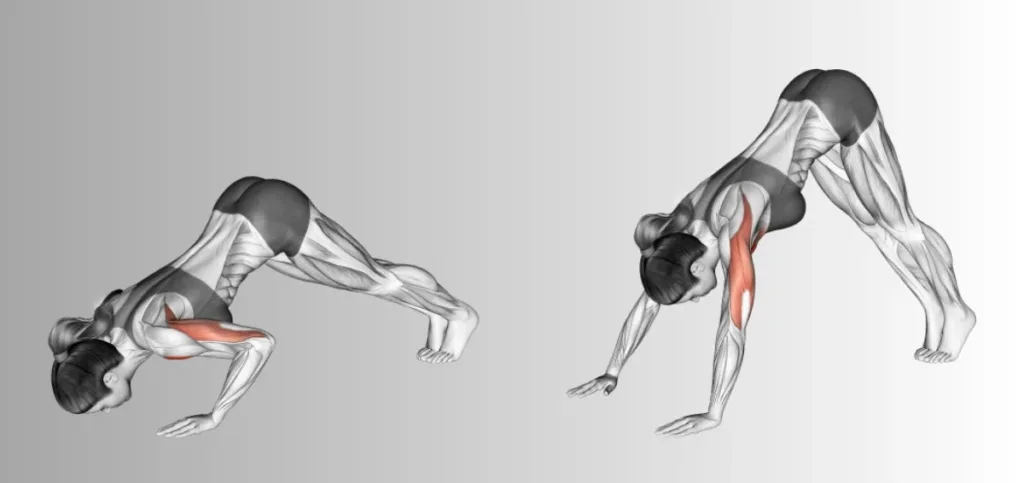
It is a bodyweight alternative to overhead pressing. Pike push-ups challenge your shoulders and triceps. They are great for home workouts without equipment. The inverted position shifts most of the load to the delts, which mimics a vertical press.
How to Do It:
- Start in a downward dog position.
- Bend your elbows to lower your head toward the floor.
- Push back up so that you get back to the starting position.
- Keep your core tight to maintain balance.
Read Also: Cable Shoulder Workouts
11. Rear Delt Row
This row variation targets the posterior delts specifically. These are overshadowed by the bigger back muscles most of the time. You can work on them to improve your shoulder symmetry and stability. You can use dumbbells or a cable machine. Focus on pulling with your shoulders rather than your arms.
How to Do It:
- Hold weights and bend forward slightly.
- Keep your elbows out wide.
- Pull the weights toward your chest, squeezing the rear delts.
- Lower slowly and repeat.
12. Plate Front Press
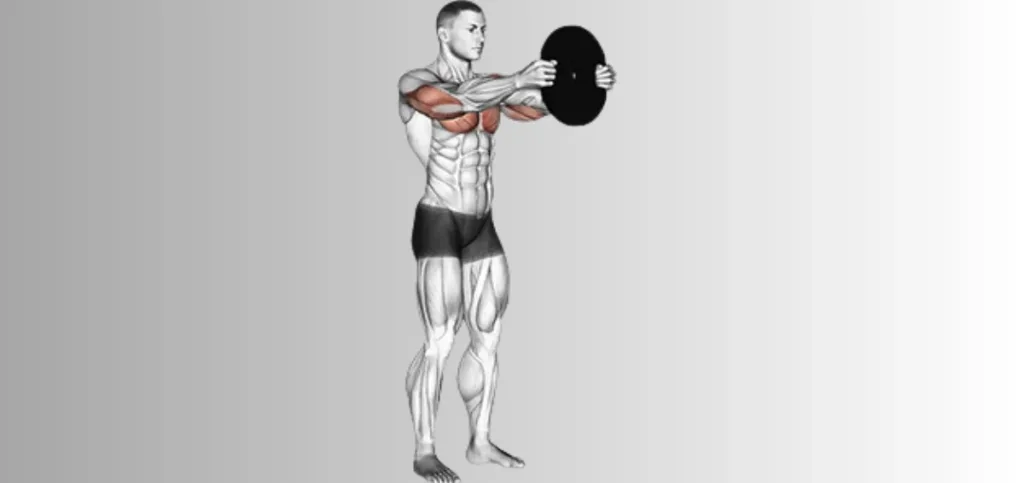
This unique movement works the front delts and chest. Holding a plate challenges your grip and keeps constant tension. It’s a good finisher to burn out the shoulders after heavier lifts. You can do it seated or standing.
How to Do It:
- Hold a weight plate with both hands at chest level.
- Press it straight out in front of you.
- Bring it back toward your chest under control.
- Keep movements slow for maximum engagement.
Tips to Perform These Exercises Properly
Getting the most out of your deltoid muscle exercises is not a simple activity of lifting weights. In fact, it is about technique and consistency. Here are some excellent tips.
- Begin with lighter weights to perfect your technique before increasing the load.
- Avoid swinging or using momentum. You have to perform slow, controlled movements that activate the deltoids more effectively.
- Shoulder joints are very delicate. So, you must do dynamic stretches or light warm-up sets before lifting.
- You have to keep your core tight during exercises. It stabilizes your body and prevents injury during overhead lifts.
- You have to breathe correctly. Exhale as you lift or push, and inhale as you lower. This keeps oxygen flowing and maintains rhythm.
- Include a mix of front, side, and rear delt movements for balanced strength.
Conclusion
Well-developed and balanced shoulders are pretty impressive. They improve your posture and stability. Also, you enjoy higher upper-body strength. Having a number of exercises in your exercise routine makes sure that all three deltoid heads are developed evenly. You can train anywhere. However, you have to maintain proper form and consistency to get better results. Begin with light weight, concentrate on control, and slowly add weight to create strength and definition in your shoulders.



